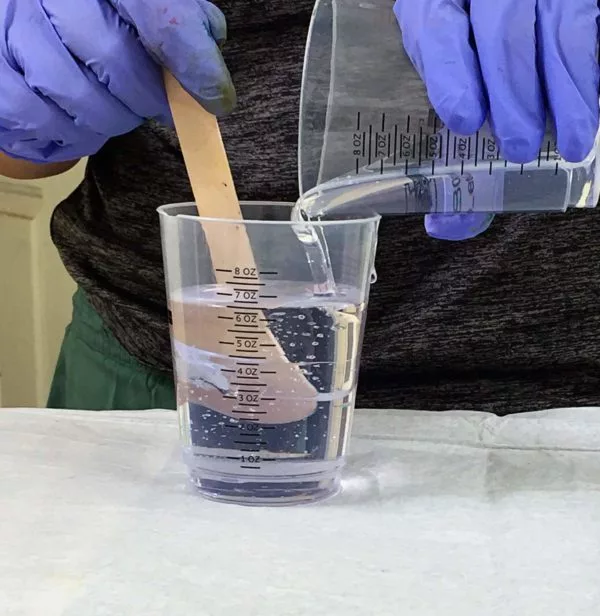Resin doesn’t have to be a ‘one and done’ kinda project. Well, it can be, but sometimes, you might want to add layers to the resin you’ve already poured.
Why would you pour multiple resin layers?
*You need your resin to be thicker than the maximum pouring depth for the resin you’re using. For example, you shouldn’t pour doming resin in depths over 1/8 inch. You’ll have to pour extra layers to get your resin thicker.
*You made a mistake. Sticky resin? Surface scratch? You can pour a new layer over your old layer.
*Your project has dimples and divots you want to cover.
*Your last resin layer cured with an amine blush surface.
*You’re adding depth to your project. When creating epoxy art, you can paint on a resin layer and then pour another. You do that as often as you like.
When can you pour another resin layer?
The easiest answer is to wait until your resin is fully dry.
When is that?
Two-part epoxy kits are dry at 90% dry at 24 hours unless you’re using a slow-curing deep-pour resin. In that case, allow 72 hours for the resin to completely dry.
Pros to waiting for the resin to be completely dry:
You don’t have to worry about your resin getting too hot and cracking. Once the resin is cured, there is no more reaction heat.
Cons to waiting for the resin to be completely dry:
You might see a seam line between layers. This is more evident with thick pours where you can see the sides of your resin art.
What if you want to pour a new layer and don’t want to see a seam line?
Then, you’ll need to pour your next layer when the previous layer is in the gel phase. That happens when the resin is the consistency of jelly — not fluid and chunks up if you try stirring it.
Do you have to sand between resin layers?
Depends. I’ve never had a problem with new resin sticking to old resin, provided the surface was clean. That means a new resin layer won’t stick in that spot if your resin is dirty or oily.
And heck, you only have to look at my old countertops to know that resin will stick to dirty, unsanded surfaces, too.
But if your resin surface is uneven, and that’s why you’re pouring a new resin layer, then you must sand before pouring a new layer.
Or maybe you just love sanding. 😳
In that case, you’ll also love this article on how to sand resin.
Do you need to mix the new resin layer differently?
No. You’ll mix the resin the same way.
💡 Pro tip: If you’re pouring a new resin layer because the old resin layer had sticky spots, be sure to know why your resin cured sticky, so it doesn’t happen again.
Can you mix and match resin types when pouring a new layer?
Once again, it depends. I’ve never had problems with one resin sticking to another resin, provided the surface was clean. But, resins will shrink a smidge as they cure. As it shrinks, it will pull on whatever it’s attached to. Pull too much, and your resin will crack. That’s why I never use polyester resin over epoxy resin. Polyester shrinks more than epoxy, which is why it doesn’t work as resin for tables.
Want to learn more beyond pouring resin layers?
Then, you’ll want a copy of the beginner resin ebook, Resin Fundamentals. You’ll get to pro status without making costly mistakes. Buy the PDF book now and get an email download link in minutes.
Unpublished Blog Posts of Resin Obsession, LLC © 2023 Resin Obsession, LLC





